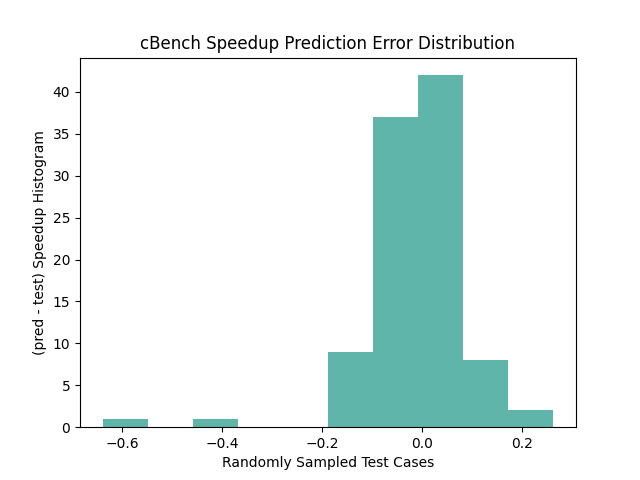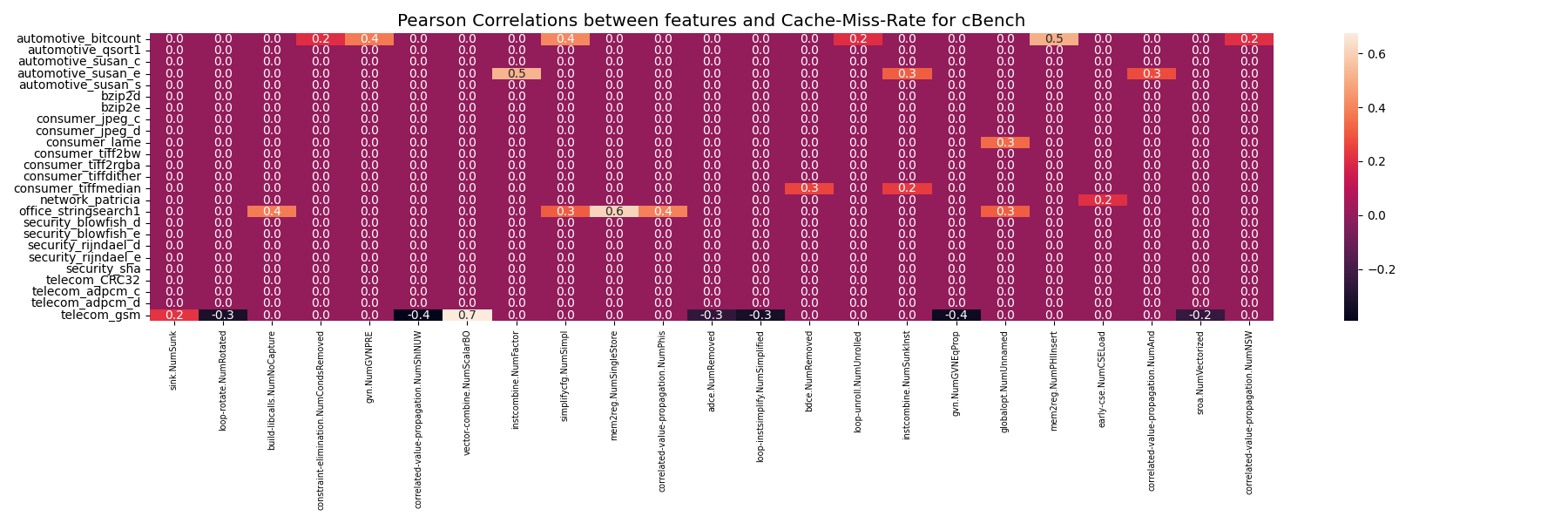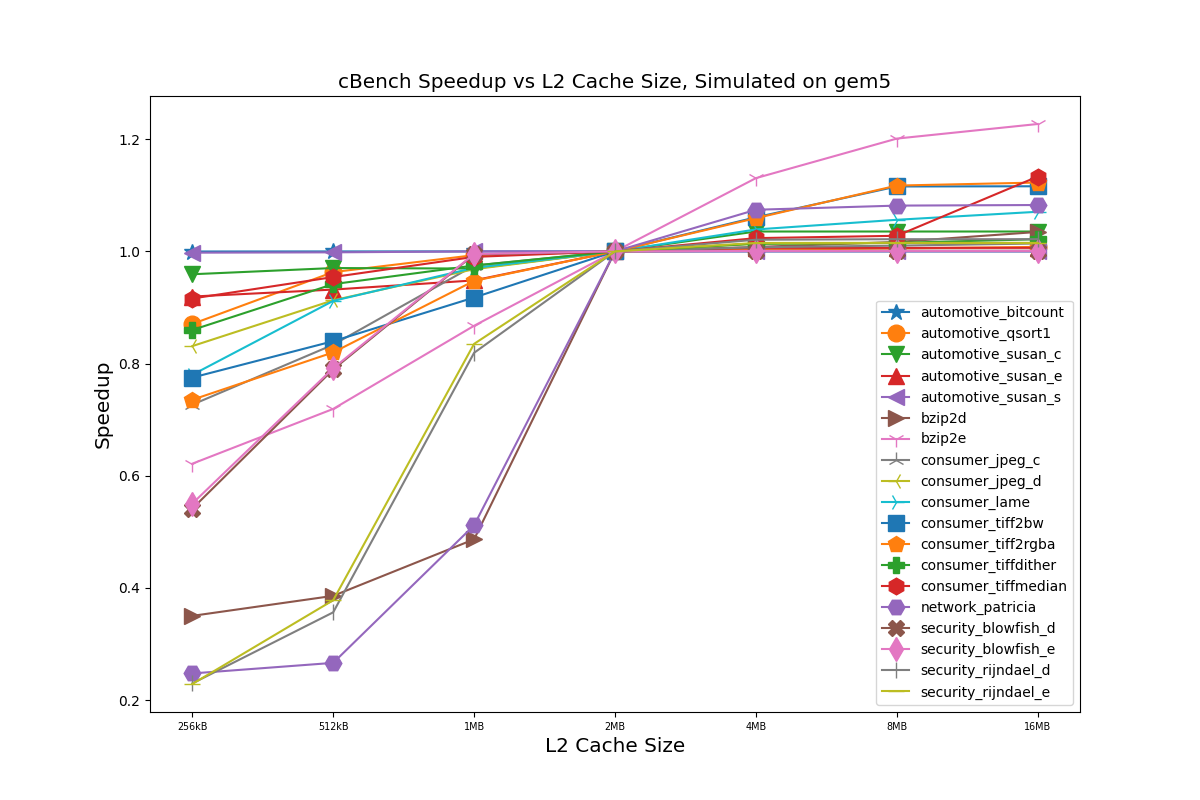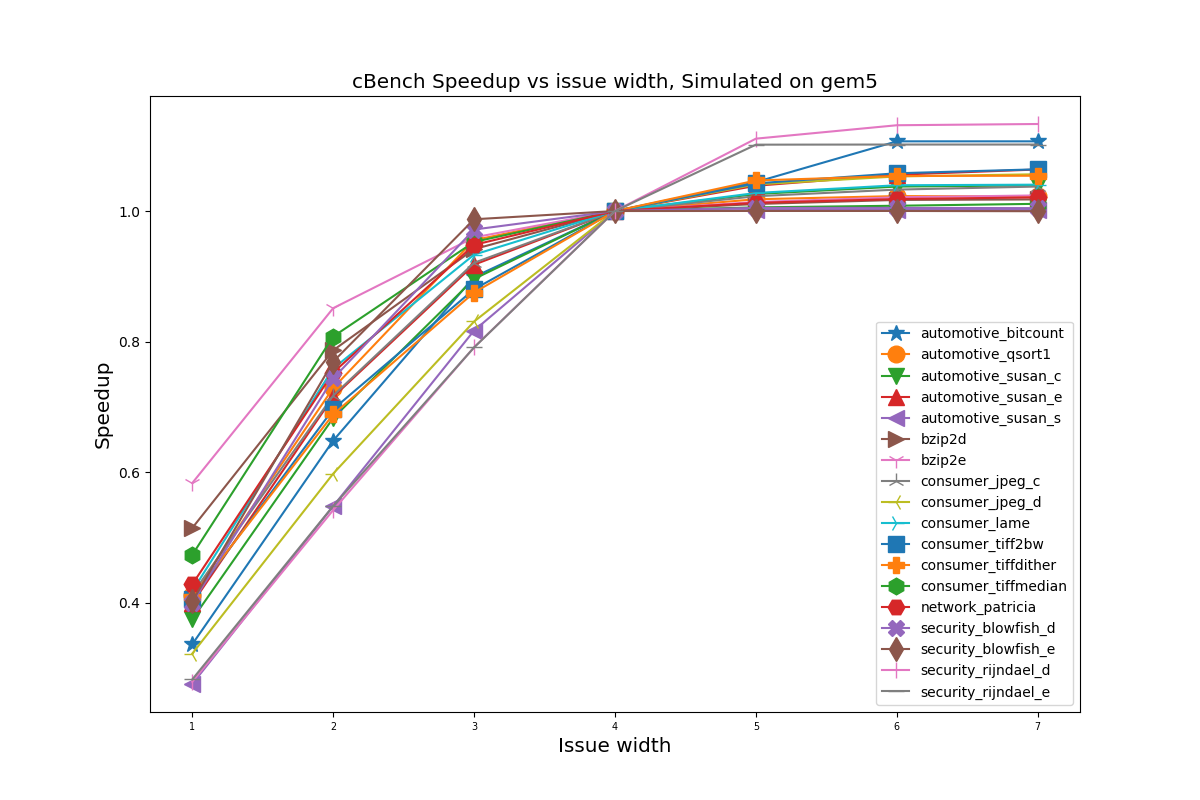This project is built for auto-tuning compiler flags and micro-architecture design. It contains two parts: the first is the cost model for auto-tuning; the second is the framework for hardware design.
- Gem5
- cBench
We provide two kinds of cost models: The first is the regression-based cost model which directly predicts the speedup given the extracted features. The second is the ranking-based cost model which predicts the relative performance between cases.
Run the regression-based model:
python3 regression_cost_model.pyYou will see outputs like this:
INFO - 2024-04-19 21:05:40,089 - prepare_dataset.py:67 - All dataset shape: (48728, 198)
INFO - 2024-04-19 21:05:40,428 - regression_cost_model.py:42 - Loading the regression model...
INFO - 2024-04-19 21:05:42,319 - regression_cost_model.py:56 - Average prediction error: 0.20661531330921792
INFO - 2024-04-19 21:05:42,358 - regression_cost_model.py:57 - Sklearn average score: 0.7243453790989751
correlation_coefficient between predict and ground_truth: 0.8567691020289628
In the previous outputs, the average prediction error is around 0.20.
You can also check the distribution of prediction errors:

Run the ranking-based model:
python3 ranking_cost_model.pyYou will see the following outputs:
INFO - 2024-04-19 21:09:32,223 - mlp_model.py:38 - Start !
INFO - 2024-04-19 21:09:37,527 - ranking_cost_model.py:62 - Feature shape for training: (48728, 198)
/Users/xiachunwei/Software/anaconda3/lib/python3.11/site-packages/torch/optim/lr_scheduler.py:28: UserWarning: The verbose parameter is deprecated. Please use get_last_lr() to access the learning rate.
warnings.warn("The verbose parameter is deprecated. Please use get_last_lr() "
INFO - 2024-04-19 21:09:40,252 - mlp_model.py:708 - Training size: 38728; Testing size: 10000
INFO - 2024-04-19 21:09:40,252 - mlp_model.py:712 - Epoch: 0
INFO - 2024-04-19 21:09:40,377 - mlp_model.py:629 - Batch: 0, train loss: 3.414378
INFO - 2024-04-19 21:09:42,839 - mlp_model.py:730 - Average test loss: 1.286543, top1 score: 0.882663, top5 score: 0.918474, top10 score: 0.934748
INFO - 2024-04-19 21:09:42,844 - mlp_model.py:712 - Epoch: 1
INFO - 2024-04-19 21:09:42,855 - mlp_model.py:629 - Batch: 0, train loss: 0.326352
INFO - 2024-04-19 21:09:45,470 - mlp_model.py:730 - Average test loss: 1.300602, top1 score: 0.879198, top5 score: 0.917802, top10 score: 0.934217
INFO - 2024-04-19 21:09:45,470 - mlp_model.py:712 - Epoch: 2
INFO - 2024-04-19 21:09:45,479 - mlp_model.py:629 - Batch: 0, train loss: 0.187633
INFO - 2024-04-19 21:09:48,163 - mlp_model.py:730 - Average test loss: 1.304941, top1 score: 0.881098, top5 score: 0.916606, top10 score: 0.935308
The top-1 score shows that the most performant ground truth result is around 0.88 of the predicted one. (The closer to 1, the better).
We provide a framework to evaluate which compiler passes are important for the hardware performance counter as well as the end-to-end latency.
For cache miss rate:
python3 ./pearson_relationship.py --label_type cache --threshold 0.2Please see the figure heatmap-Cache-Miss-Rate.png in figures:

For end-to-end latency:
python3 ./pearson_relationship.py --label_type speedup --threshold 0.4Please see the figure heatmap-Speedup.png in figures:

You can increase the threshold to filter out compiler pass features.
python3 predict_gem5_sensitive.pyWe provide a framework to analyze how the micro architecture design choice will affect the final performance.
python3 run_gem5.pyNote, it may take several hours to even several days to run the simulation. The simulation time depends on the performance of the CPUs.
After collecting the simulation results for different architecture parameters, we can show the how the latency changes with the parameters for all the benchmarks.
python3 draw_gem5.py